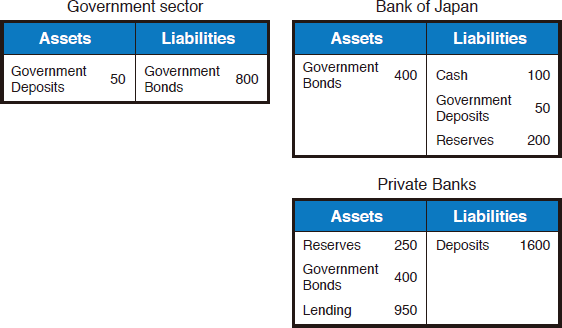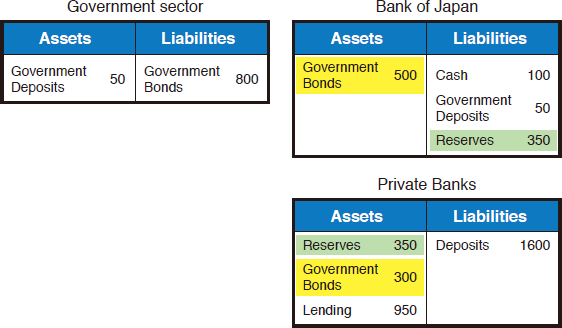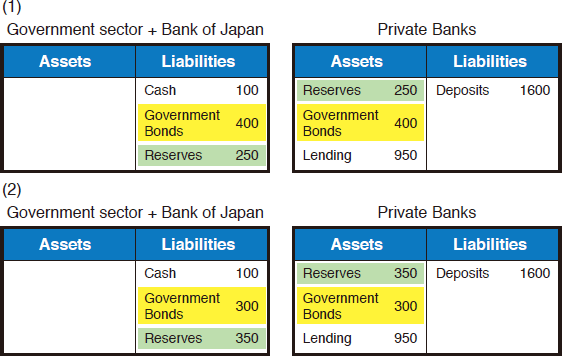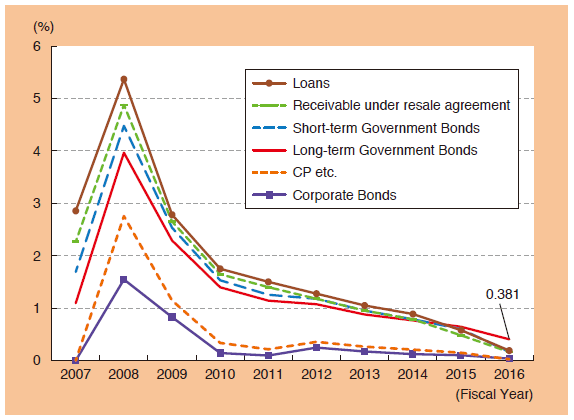PDF version [PDF:222KB]
Japanese Finance Further Aggravated
One of the strategies of Abenomics was to balance fiscal restructuring and economic revitalization by increasing tax revenues through economic growth. But national tax revenues for fiscal 2016 were down by 2.1 trillion yen compared to the estimated tax revenues in the initial budget, down 0.8 trillion yen compared to the year before, and marked a decrease for the first time in seven years. This may be one piece of evidence that the Japanese economy is heading towards an economic downturn.
Under such circumstances, the Cabinet Office announced recently (July 18, 2017) the revised version of the "Estimates on Mid- to Long-Term Economy and Finance." According to the preliminary calculations, even if Japan were able to achieve a high growth scenario (economic revitalization scenario) with a real GDP growth rate of around 2% by the early 2020s, and if the scheduled hike in the consumption tax rate for October 2019 were implemented, the combined national and local Primary Balance (PB) for fiscal 2020 will fall to a deficit of 8.2 trillion yen and a PB surplus which the government is aiming to achieve by 2020 cannot be realized. Moreover, if the mission for increased government revenues through the consumption tax hike were to be changed and the budget for child care support and free education expanded, it is clear that achieving a PB in fiscal 2020 will become even more difficult.
To begin with, in the mid- to long-term preliminary calculations, the "Total Factors in Productivity (TFP)," which the high growth "economic revitalization scenario" assumes, is an optimistic and unrealistic scenario. Despite the TFP for fiscal 2016 being 0.6%, the scenario assumes an increase to 2.2% by the early 2020s, but this is an average TFP figure from the period between 1983 and 1993 when the Japanese economy fell into deflation, and roughly similar to the TFP figure during the "Bubble" period. This is the major reason behind the economic revitalization scenario where the real GDP growth rate rises to around 2% by the early 2020s despite the average real GDP growth rate being 0.8% from fiscal 2002 to 2015.
Japan must abandon this unrealistic scenario and face "the reality of public finance." In the mid- to long-term preliminary calculations for the cautionary scenario of Real GDP Growth Rate at 0.7% (Nominal Growth Rate of around 1.2%), the fiscal deficit (percentage of GDP) for fiscal 2025 is forecasted to be around 4%, but if the tax increase is postponed, the deficit is certain to expand to around 5%. In this case, we can also see that the final outstanding balance (percentage of GDP) of government bonds, etc. will exceed 400% if Domar's Theorem is implemented. As social security costs surge and the financial deficit persists with the decreasing birth rate and aging population, the financial situation for Japan looks extremely tough with government debt being twice the size of GDP, and it is forecasted that this will become even more grave.
Relationship Between the Bank of Japan and Government from an Integrated Balance Sheet Perspective
As the term "Financial Democracy" describes, finance is "the mirror which reflects politics" and whether or not we regain financial discipline will depend on the choices Japanese citizens make, but our sense of crisis about the sustainability of finances is weak.
One of the large factors behind this is the Bank of Japan (BOJ) keeping national bond yields at an extremely low standard, having bought massive amounts of government bonds through a "different dimension" monetary policy. As a result, yields on Japanese government bonds have remained around 1% (weighted average yield on issued government bonds), and interest payments for the roughly 1 quadrillion yen government debt have been curbed to around 10 trillion yen.
Under such circumstances, there have been claims that "if the BOJ buys up all of the government bonds, fiscal restructuring will end with no fiscal burdens on the Japanese people," but the important message from economics is that "there is no free lunch," and this claim is false. Even if the BOJ bought up all of the government bonds, it does not imply that a financial reconstruction is complete. It is of utmost importance to have a deep understanding of this fact as a premise, when discussing the relationship between finances and the BOJ, and why is explained below in steps.
The first reason is that monetary policy is an "equivalent exchange" of assets and what supports BOJ buying of government bonds is mainly our bank deposits. In order to understand the meaning of this, let us consider a simple scenario.
In actual economics, many different households, businesses, and monetary institutions such as banks exist, but let us assume that besides the government sectors and BOJ, there is only one private bank. We also assume that the balance sheets for the government sector, BOJ, and the private bank look like Chart 1. (Note: For simplicity, we ignore other assets and equity capital of the BOJ except for government bonds, equity capital and others of private banks.)
"Cash" on the liability side of the BOJ balance sheet indicates the balance of BOJ notes circulating in the market, and "Reserves" indicates the deposits the central bank is entrusted with by the private banks.

Now, let us implement a monetary policy of a bond-buying operation where the BOJ buys 100 bonds from the private bank. This policy is a measure "to equivalently exchange bonds and reserves," and as such the BOJ must increase the current deposits of the private bank by 100 in compensation for the bond purchase. In other words, on the BOJ balance sheet, bonds on the asset side increase by 100, and reserves on the liability side increase while the balance sheet of the private bank sees an increase in reserves on the asset side by 100, but a decrease by 100 in bonds. As a result, the balance sheets for the government sector, the BOJ and the private bank look as follows:
The highlighted sections in yellow and green indicate the changes from Chart 1, but what does Chart 2 mean? Let us first look at the balance sheet for the private bank. The asset side of this balance sheet has reserves of 350, bonds of 300, and lending of 950, and the total of 1,600 is supported by the deposit of 1,600 on the liability side. In other words, a portion of the deposits (350) on the liability side is supporting the reserves of 350. Let us now look at the BOJ's balance sheet. This balance sheet has cash of 100 (= BOJ notes circulating in the market), government deposits of 50, reserves of 350 on the liability side, and the total 500 is supporting the government bonds of 500 on the asset side. In other words, reserves of 350 on the liability side are supporting a portion of government bonds of 350 on the asset side.
As a result, the composition looks to be, a portion of the deposit on the liabilities side of the balance sheet for the private bank (350), through 350 of reserves on the asset side, indirectly supporting a portion of the government bonds (350) on the asset side of the balance sheet of the BOJ. It is important to note that "Bonds" which make up the majority of the asset side of the BOJ balance sheet is "BOJ loans against the Ministry of Finance," and "Reserves" that make up the majority of liability is "private bank loans to the BOJ" (debt from the BOJ perspective). Thus, generally, BOJ-owned government bonds and reserves cannot be offset from a bond/debt relationship. But, for example, in Chart 2, if a portion of BOJ-owned government bonds (350) and reserves (350) were offset from a financial reconstruction perspective, that is the same as the government sector imposing a 100% tax policy on the 350 reserves, and the end result is a partial loss (350) of our deposits with the private bank.

By the way, it is also important to note the fact that capital which covers outstanding government bonds is basically deposits, and that monetary policy does not increase the capital stock. This fact can be easily understood from the integrated balance sheet of the BOJ and the private bank. First, if we integrate the BOJ balance sheet and private bank balance sheet in Chart 2, then offset the reserves on both the asset and liability side, it produces Chart 3 as below. This integrated balance sheet indicates that 100 cash on the liability side (=BOJ notes circulating in the market), government deposits of 50 and our deposits of 1,600 are supporting the outstanding government bonds of 800 that the government issued and 950 lending to businesses and others.
In addition, if the balance sheets of the BOJ and private banks were integrated and reserves on both the asset side and the liability side were offset, the exact same balance sheet as in Chart 3 can be obtained. This fact indicates that capital which covers outstanding government bonds is basically deposits and that monetary policies do not increase the capital
The second reason is, as interest rates normalize, if the BOJ interest on "excess reserves" at the BOJ from private banks is to be restrained rather than brought up to an adequate level in comparison to the market rate, then from the perspective of an integrated government of the government sector and BOJ, it is in fact the same as imposing deposit taxation. In addition, if the BOJ interest on "excess reserves" were to be raised to an adequate level, from an integrated government perspective, "excess reserves" is virtually roughly the same as issuing government bonds (issuing short-term government bonds). The context of this will be explained in stages below.


To deepen our understanding on this matter, let us consider the integrated government balance sheet for the government sector and the BOJ for each of the cases in Chart 1 and Chart 2. By offsetting government deposits and government bonds on both the asset side and liability side of the balance sheet of the integrated government (government sector + BOJ), Chart 4 for each scenario can be obtained.
Of the facts that can be read off Chart 4, there are two most important perspectives. The first perspective is that in both the scenarios of Chart 4, (1) and (2), the total 650 of "Bonds" and "Reserves" on the liability side of the balance sheet of the integrated government (government sector + BOJ) coincides with the total of the "Bonds" and "Reserves" on the asset side of the balance sheet of the private bank, and what supports this asset is our "Deposits of 1,600" on the liability side of the balance sheet of the private bank.
The other perspective is that of "Cash," "Bonds" and "Reserves" on the liability side of the balance sheet for the integrated government, the interest cost on cash is "zero," the interest cost on government bonds is "long-term yield (e.g. 10-year government bond yield)," and the interest cost for reserves is "BOJ interest."
In a situation where the nominal interest rate is more or less zero under deflation, both interest costs on government bonds (= long-term interest rate) and interest costs on reserves (= BOJ interest) is more or less zero, and therefore the debt cost for the integrated government (government sector + BOJ) for scenario (1) and (2) in Chart 4 is roughly equal.
On the other hand, if interest costs (= long-term interest rate) and reserve interest costs (= BOJ interest) differ greatly, debt costs for the integrated government (government sector + BOJ) will also differ greatly. For example, if BOJ interest can be maintained at a much lower level compared to the long-term interest rate, the debt costs for the integrated government (government sector + BOJ) will be lower for scenario (2) than scenario (1) in Chart 4, and debt costs can be reduced.
What then occurs if long-term interest is kept at a much lower level than the BOJ interest even after interest rates have normalized? In looking at the integrated government (government sector + BOJ), that is the same as imposing tax on deposits. On the other hand, if interest rates normalize and if the BOJ interest is brought up, BOJ interest on excess reserves will be at the same level as "short-term interest" such as yield on short-term bonds and call-rates. From the perspective of the integrated government (government sector + BOJ), "excess reserves" in effect is the same as issuing government bonds (issuance of short-term government bonds).
In other words, the claim that "if the BOJ buys up all of the government bonds, financial restructuring is complete without burdening Japanese citizens" is a lie, and to secure the sustainability of finance, there is a need to pursue financial reconstruction in a solid manner.
Risk of Losses at the End of Monetary Policy
As the BOJ buys up a huge volume of government bonds as part of the monetary policy, there is also an inherent risk that the current BOJ is carrying, and one of the major issues is the risk of losses which comes at the end of monetary policy after Japan comes out of deflation. In its Monetary Policy Meeting which was held in late July 2017, the BOJ extended the completion period for the 2% price target by a year from "around fiscal 2018" to "around fiscal 2019," but this is the sixth price target extension since April 2015. Thus, overcoming deflation seems very difficult, and it is quite possible that it would still be some time away, but there is an increasing concern that if the price target of 2% is achieved, the BOJ will become insolvent with "a negative spread."
Whether the BOJ will actually become insolvent with "a negative spread" will depend on the speed at which it proceeds with interest rate hikes once Japan overcomes deflation. Therefore, let us do a simple "brain exercise" as below.
As Chart 5 shows, interest rates on managed assets at the BOJ have been continuously falling and the most recent interest rate on combined managed assets is around 0.3% (0.381% for long-term government bonds). As of Oct. 6, 2017, the balance sheet has around 500 trillion yen in assets of which around 440 trillion yen is in government bonds. Even if interest rates normalized after overcoming deflation and market interest rates are pressured to slowly rise, coupons (yield) on government bonds, which is a type of bond, are fixed, and therefore yield on managed assets at the BOJ will not rise in the short term.
On the other hand, if a price target of 2% can be achieved by overcoming deflation, the BOJ needs to raise interest rates in order to restrain further rises in prices. Under such circumstances, the BOJ has two main methods to do that.
The first method is to sell government bonds that the BOJ owns to guide a rise in interest rates. If government bonds are sold off, the BOJ can receive payments on excess reserves as compensation from private banks and other institutions, and while the BOJ balance sheet will shrink in size, it can sell government bonds when there is downward pressure on government bond prices with rising interest rates, and the BOJ may have to accrue capital losses. Japanese finance, which also carries an enormous debt of 1 quadrillion yen, also faces the risk of sharp increases in debt payments as interest rates rise.

The second method is for the BOJ to raise its interest on excess reserves and guide a rise in interest rates. The BOJ interest on excess reserves is at the same rate as the "short-term interest rates" such as yields on short-term government bonds and call rates, and therefore if the BOJ interest rate is raised, there will be upward pressure on short term interest rates.
In this case also, the BOJ may stand to experience capital losses, but as mentioned previously, it has adopted the "amortized cost method" (method of accounting equal amounts of losses every year until amortization of the government bond) for its accounting standard, hence there is no need to accrue capital losses if the BOJ holds on to government bonds until maturity.
Losses will arise when the BOJ experiences negative spread. In other words, if the BOJ interest on excess reserves which make up the majority of its debt exceeds the yield on government bonds which make up the majority of the managed assets of the BOJ, the losses for the BOJ will manifest.
For example, let us consider the case where the BOJ asset is 400 trillion yen in government bonds with a yield of 0.4%, the BOJ debt cost is at 0.1% including BOJ interest with 100 trillion yen of issued bank notes, and excess reserves of 300 trillion yen. In this scenario, the BOJ is able to receive interest on managed assets of 1.6 trillion yen (= 400 trillion yen x 0.4%), at the same time paying 0.3 trillion yen (= 300 trillion yen x 0.1%) as debt costs, and make a net profit of 1.3 trillion yen. After corporate taxes and other taxes, 95% of the final profit must be paid to the National Treasury as a general rule and this then becomes part of the revenue for the national budget.
However, what about the case where the BOJ interest rate is raised to constrain inflation? If the inflation rate is within the range of negative 0.5% to 1%, the BOJ interest rate is set to be 0.1%, and therefore for the real interest rate to be at the same rate as inflation of 2% to 3%, it is natural to assume that the BOJ interest rate needs to come up to the 1.1% to 3.6% range.
In this case, the yield on government bonds will remain around the 0.4% level for a while and therefore while interest income from managed assets will remain around 1.6 trillion yen, debt costs will expand to 3.3 trillion to 10.8 trillion yen (= 300 trillion yen x 1.1% to 3.6%), and under negative spread the losses of the BOJ will manifest in the range of 1.7 trillion yen to 9.2 trillion yen. If this sort of loss continued for a few years, the BOJ would become insolvent.
According to Dr. Peter Stella ("Do Central Banks Need Capital?," IMF Working Paper, July 1997, and "Central Bank Financial Strength, Transparency, and Policy Credibility," IMF Working Paper, August 2002) and others, there have been many cases where central banks have gone into insolvency. For example, the Venezuela Central Bank (1980s to 1990s), Jamaica Bank (1980s to mid-1990s), and the old Philippine Central Bank became insolvent when central banks were no longer able to achieve the goal of price stability, leading to high inflation.
On the other hand, there are cases like the Czech Central Bank which became temporarily insolvent (1990s to 2015) but the problem did not persist. Thus, even if the BOJ temporarily becomes insolvent, it cannot be concluded that it will become a critical issue. In addition, dealing with insolvency would mean an increase in the burden on its people, thus gearing up interventions by financial authorities and politicians on the size of compensation for losses and methods, thereby raising the possibility that while conditions will be levied which may necessarily be consistent with the price stability goal which the central bank aims to achieve, there is room to consider the fiscal authorities taking on compensation for losses and resolving the insolvency of the central bank.
Either way, if we consider the government and BOJ being a unit, the perspective that even if the BOJ owned government bonds, the integrated debt cost basically does not change, is more important. Interest rates are currently around zero and therefore debt costs have not manifested, but once Japan overcomes deflation, cash and reserves on the liability side of the BOJ balance sheet will become impossible to maintain unless prices go up by several times over, and the BOJ needs to either decrease its government bond holdings to downsize the balance sheet, or raise its interest rate on reserves to maintain the current scale of the balance sheet.
When that occurs, the circumstance in which a fiscal deficit can be financed at no cost is completely over, and massive debt costs will once again manifest. This creates the need for thorough consideration of the risks of different dimension monetary easing and future costs when thinking about the exit from an expansionary monetary policy and its limitations.
This article first appeared on the January/February 2018 issue of Japan SPOTLIGHT published by Japan Economic Foundation. Reproduced with permission.
January/February 2018 Japan SPOTLIGHT


